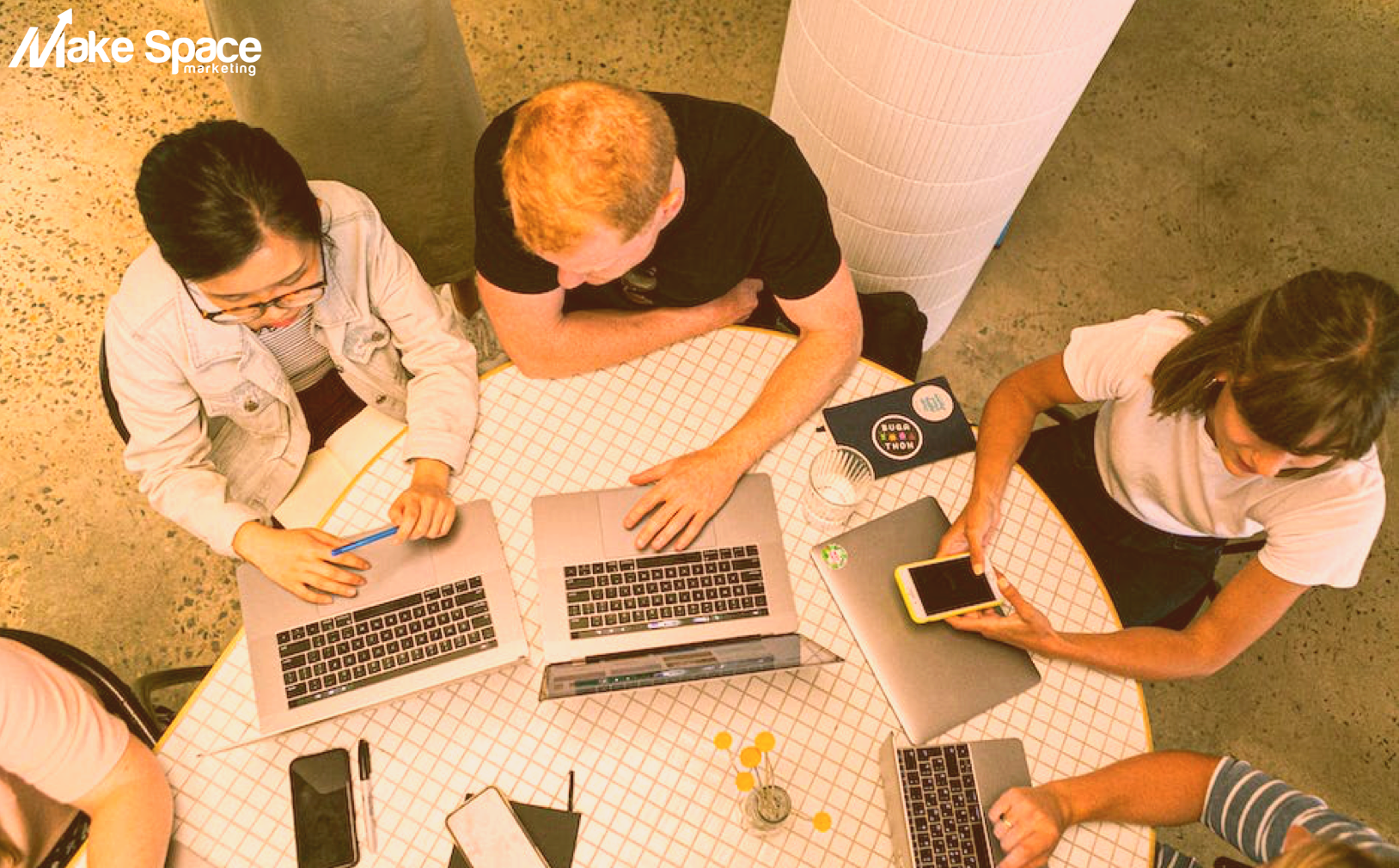Ten-Step Web Design Process
Ten-Step Web Design Process
How Web Design Works
Our Web designers at Make Space Marketing are constantly pressured to deliver the best results faster than ever. And it's easy to see why: there's more competition than ever, which means websites must be more attractive, engaging and effective. A well-defined web design process helps us ensure that we consistently deliver outstanding results for our clients and that they keep returning for more.
Here are ten steps we recommend taking as part of your web design process:

1. Consultation with Web Designers
To begin, we'll consult with you to brainstorm ideas and explore the goals and objectives of your project. An essential part of the consultation is to develop a clear understanding of the website design project's scope. We will then utilise our expertise in web design to determine which features are best for your business or organisation.
2. Research
Research is a vital part of the web design process. It's essential to do thorough research before you start designing because it will help you define your target audience and inform us of your design decisions.
At Make Space Marketing, we conduct two main types of research: qualitative and quantitative. Qualitative methods include interviews, focus groups and surveys; quantitative methods include analytics software (e.g., Google Analytics) that measures website traffic data and other data points such as bounce rate or conversion rate from visit to sale/lead generation.
When using either research method, collect feedback from multiple sources so you don't rely too heavily on one person's opinion or gut instinct.

3. Site Mapping the Website
Wire-framing and site mapping are two critical steps in the web design process. Wireframes are a visual representation of a website's structure, showing how its content will be organised and how it will relate to other pages on the site. They don't show any real information (like text or photos), but they convey your site's information architecture, that is, what goes where. Site Mapping is a worthwhile process to go through with the client to show them the structure in a format that is easily understood.
4. Design and Development

Once you've nailed down your business goals and audience, it's time to proceed to the next step: design. Design is more than just what a site looks like; it also involves how visitors interact with the content on the page. Without good design which is intuitive and well thought out, the user will leave the site quickly.
Once you know what design style you'd like for your site, it's time to start. You'll need essential tools such as Photoshop or Illustrator (or their free alternatives) to create mockups showing what users will see when they visit your site.
5. Testing and Optimisation
This is part of the web design process, where you see how your website performs in real-life conditions. You should test your website with real users as soon as possible before you've even finished building it. This will give you a chance to iron out any problems before they have an opportunity to impact user engagement or sales figures.
Testing can take many forms, such as:
- Usability testing on paper prototypes or using digital prototypes (if available).
- A/B testing by showing two versions of an element side-by-side.
- Tracking analytics such as page views per visitor and bounce rates.
- Heatmap analysis which shows where users click most often.
- Surveys ask visitors what they think about various aspects of the site.
6. Maintenance and Upgrades
Upgrades are essential to keep your website current and relevant. It's also necessary to stay on top of the latest technology, which can be expensive and time-consuming. For example, you might spend weeks or months rewriting code to make it compatible with newer versions of HTML or CSS. And then all those new user interfaces have popped up since you built your site; how do you even know which ones will work best? All this makes upgrades seem more like a chore than an opportunity for growth and improvement. But if done right (and with some foresight), upgrades can be exciting opportunities for development and progress.
7. Marketing and Reporting

Designing a website and putting it online is fine if you are only wishing to point potential clients to it. However if you want customers to come to you to buy your products and services, digital marketing and SEO is absolutely necessary.
Marketing and reporting are essential parts of the process. Marketing is a crucial part of the web design, as it helps define your goals and objectives to create an effective marketing strategy. It's important that you're able to communicate these goals with your team. Hence, they know what needs to be accomplished by when, but also why it matters so much about other projects or company initiatives. Reporting allows you (or someone else) on your team who isn't directly involved in day-to-day activities with clients or vendors to see how things are progressing.
8. Cost Control and Budgeting
The next step in web design is setting a budget and tracking costs. It's essential to control how much you spend on your website before beginning work to stay within your budget.
You may find that some marketing agencies will charge less than their competitors because they know it's challenging for small businesses like yours (or individuals) who don't have much experience with budgets or negotiating contracts. At Make Space Marketing all of our costs are transparent and are tailored to suit the size of the project and the difficulty. For example we do price lower for smaller businesses, normally because your website needs are typically less than larger companies.
9. Communication with Clients and Other Team Members
Make Space Marketing always aim to keep clients in the loop. Keeping our clients informed regularly is important, especially during the design process. Clients should know what to expect and when to expect it so they aren't left wondering if their project will be completed on time.
Make sure clients are happy with the process. If there are any concerns or issues along the way, address them immediately so that your client is satisfied with how things are going (and so you don't have another problem, client). Be available for questions throughout this phase of your project! Your job continues when you deliver your first draft--you're still involved until everything is finished and ready for launch. Open yourself up to suggestions from other team members; even if those suggestions differ from yours initially, consider incorporating them into future versions as long as they're within reason.

10. Evaluation and Improvement of Processes and Procedures
You should evaluate the process to see if it is working; this can be done by looking at the results and seeing if they are what you expected. If not, improve the process so that it does work. Improvements should be made based on the results from a previous evaluation of your web design process.
A well-defined process helps ensure that web designers consistently deliver great client results. The best way to create a process is by taking an inventory of all the steps involved in designing and building a website and then breaking them down into smaller tasks. This will help you notice the gaps in your workflow, so you can fill them with tools or systems that work best for your team and client needs.
Summary
We hope you enjoyed this blog and that it has given you a good insight into our Ten-step web design process. The key during all web development stages is communication and feedback; if you get this right, the project should run smoothly. Of course, there are many ways to develop a website, but as long as the approach is thorough and process driven, it can be an enjoyable and exciting collaboration.
Web Developers - Make Space Marketing
If you need a website or work to improve an existing one, consider using Make Space Marketing. We are proud of our excellent record of delivering amazing websites that often surpass our client's needs.



